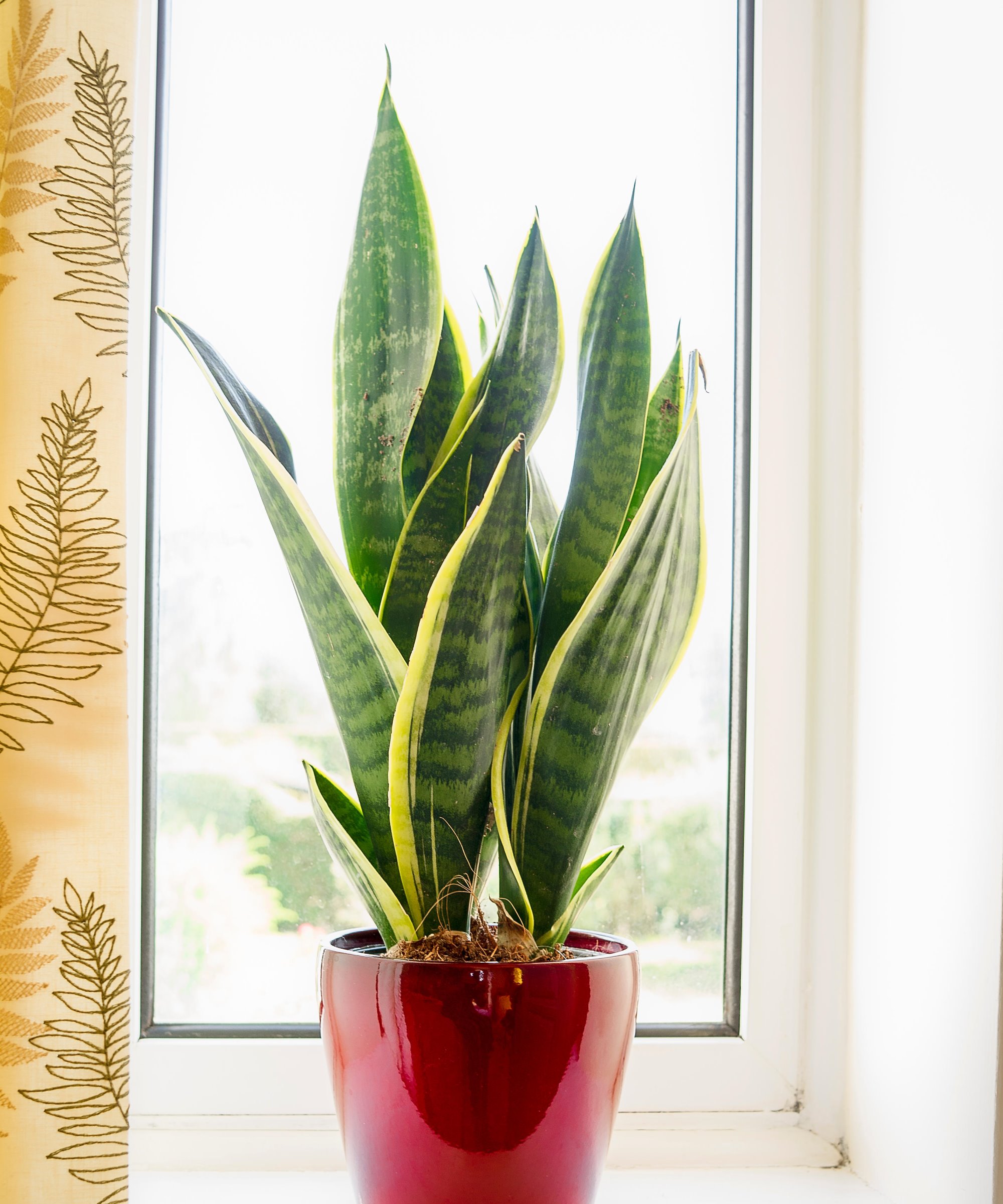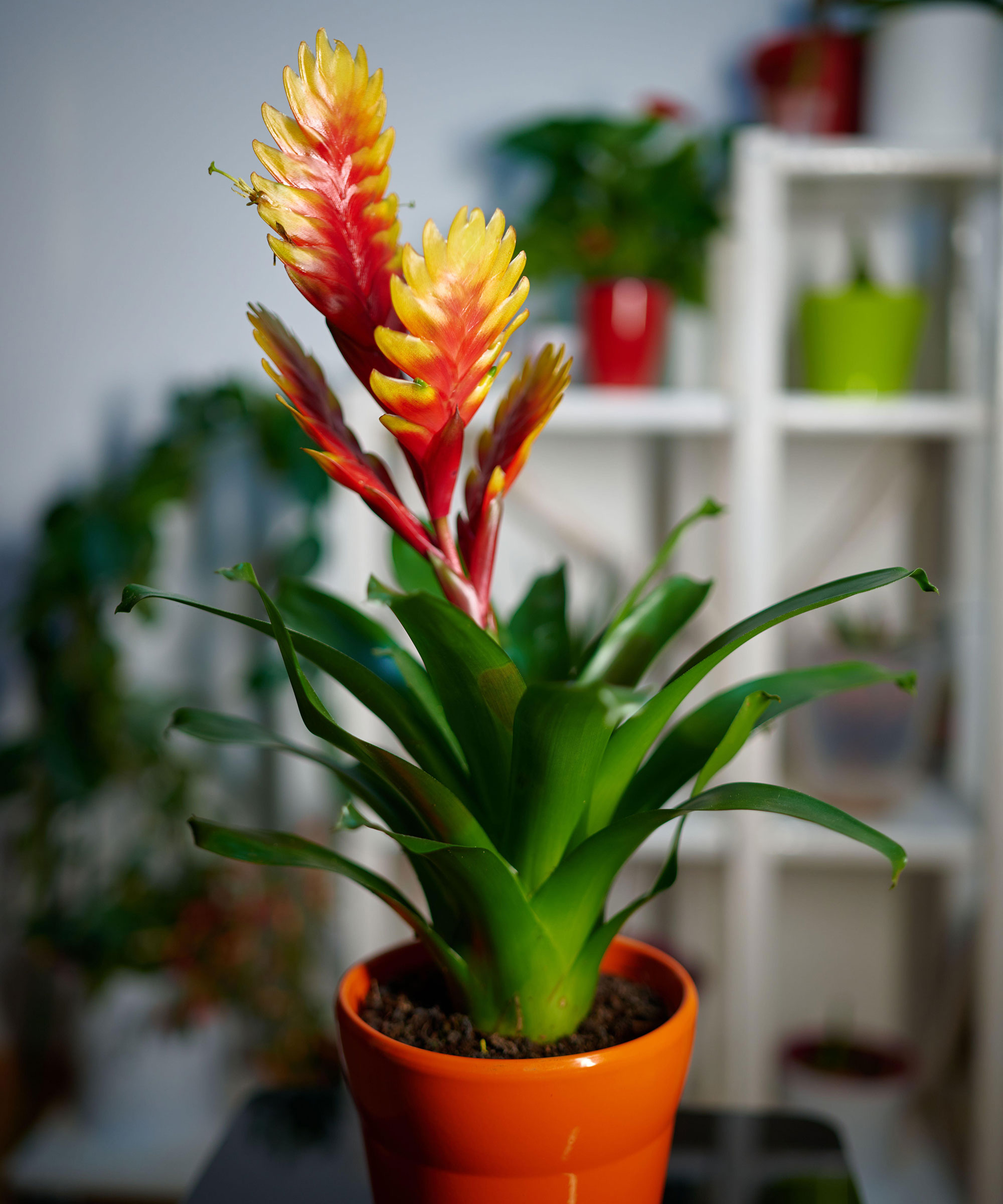Best cold-tolerant houseplants – 6 indoor plants that are happy in chilly spots
These indoor plants will tolerate colder room temperatures


There are lots of things to consider when it comes to choosing the best indoor plants for your space. You have to balance factors of light, humidity and temperature.
Winter months can be especially hard on houseplants if they don't receive the proper winter care and may start showing signs of cold damage.
While lots of houseplants do best in direct sunlight and enjoy warmer temperatures, there are also many options for those colder spots in your home, as well as indoor low-light plants.
We've collated an expert list of houseplants that are a bit hardier in cold room temperatures.

6 cold-tolerant houseplants
If you have a room in your home which is prone to lower room temperatures or a spot that doesn't seem to catch the warmth of the sun, such as a north-facing windowsill, you can still add greenery by choosing a cold-tolerant plant. Our expert list outlines plants that will be happy in chillier spots.
1. Clivia

Clivia plants, also known as bush lilies, are easy indoor plants that add a pop of color with their beautiful orange flowers. These elegant flowering houseplants are native to South Africa, so do best in bright, indirect light, but they can also tolerate lower temperatures during winter.
'Clivia requires two to three months of cool temperatures in winter (around 50°F). This imitates the winter temperatures in the plant’s native South Africa and stimulates flowering in spring,' says Vladan Nikolic from Mr. Houseplant.
Design expertise in your inbox – from inspiring decorating ideas and beautiful celebrity homes to practical gardening advice and shopping round-ups.
They are resilient plants with sturdy foliage and don't mind sitting in cooler spots during cold seasons. Although, sudden temperature fluctuations could stress the plant, so it's important to keep it at a consistent temperature during the winter if possible.
'During this period water sparingly, only when the soil dries out completely, and don’t fertilize the plant. In spring, when the flower stalk appears, return the plant to regular room temperature and increase watering,' says Vladan.

Vladan Nikolic is a houseplant expert with over 10 years of experience. He is the founder of the houseplant care blog Mr. Houseplant and is a social media influencer for houseplants with over 500,000 followers.
2. ZZ plant

Zamioculcas zamiifolia, or ZZ plants, are glossy houseplants that are low-maintenance and add interesting structure with their leaves that zigzag out from the stem.
Different varieties offer different heights, whether you want one that grows up to one meter tall or a smaller desktop size. Whatever the case, these plants won't make a fuss when it gets colder and will tolerate lower temperatures around 50°F, although they do best above 60°F.
'ZZ plants need access to bright, indirect light or filtered sunlight. In addition, they hate having wet feet, so a well-draining medium that stays just barely damp to the touch is ideal,' says Lorin Nielsen, Head Horticulturist at Epic Gardening.
Incorrect watering of these plants could lead to leaves turning yellow, but it's easy to monitor moisture using a meter like this soil moisture meter from Amazon.

Lorin Nielsen is the Head Horticulturist of Epic Gardening and its seed company, Botanical Interests. A California Naturalist, lifelong gardener, and plant-lover, she is a self-described composting geek, an avid food gardener, and the "plant mama" for several houseplants. She and the rest of the Epic Gardening team share a mission of teaching the world to grow, and she loves to help people discover their green thumb.
3. Snake plant

These houseplants have been popular for a long time due to their attractive, upright foliage and low-maintenance nature. Snake plants are known for their slender, striped sword-like leaves and are a great choice for beginners.
These succulents are native to West Africa and don't mind cold temperatures that replicate the winter temperatures in their natural habitat. Although, it is important not to let its soil become too wet or to water it too often because it could lead to the snake plant dying.
'Because snake plants are succulents, they can take quite low temperatures, but not freezing. They can take lower temperatures as long as the soil isn’t wet. Otherwise, give this plant as much sun as you can, and it may even bloom,' says Lisa Eldred Steinkopf from the Houseplant Guru.

Lisa is a houseplant expert who runs her blog The Houseplant Guru with over a decade of professional experience at Steinkopf Nursery and Garden Center in Michigan. As a child, Lisa helped her grandma tend to African violets and other houseplants. Since then, Lisa has forged a career providing houseplant advice, holding lectures and writing for publications across the US.
4. Bromeliad

You can warm up cooler rooms with a bromeliad, a vibrant indoor flowering plant with lush foliage.
'Bromeliads are very resilient and can tolerate temperatures as low as 20°F. Temperature tolerance depends on the species, and the most cold-tolerant bromeliads come from the dyckia genus,' says Vladan.
They're native to North and South America, where they grow in deserts, mountains and forests. As tropical houseplants, they appreciate high humidity during the growing season, which can be achieved with a mister like this stainless steel mister from Amazon.
Bromeliads will thrive best in sun, so it's a good idea to move them to direct sunlight when warmer seasons come around.
5. Aspidistra

Aspidistras are better known as cast iron plants, hinting at their forgiving nature. They are resilient indoor plants with slender foliage that can grow as tall as one meter, ideal for adding green structure.
They're among the best winter houseplants because they can cope well with low light as well as lower room temperatures.
'Avoid direct sun or total darkness, but cast iron plants will perform perfectly in that space between the two. They can survive temps down to 45°F but like it above 60°F. These tolerate neglect well, especially during the winter months. Just make sure they get watered every week or two,' says Lorin.
6. Jade plant

Known for their lucky nature, jade plants are glossy succulents that are easy to look after and will adapt well to low-light positions. Also known as Crassula ovata, they're native to southern Africa and are resilient to dropping room temperatures.
They grow beautiful small trunks and have a similar appearance to bonsai trees. Things to watch out for include incorrect watering which could result in dropping leaves.
When it starts to warm up again, jade plants will thrive in direct sunlight. 'South-facing windows provide more sunlight in the winter months,' suggests Lorin.
While succulents like jade plants are excellent for adapting to cool temperatures, it is important to ensure they have a well-draining potting mix so that they don't become too wet. You can find specific potting mix online, like this succulent soil from Perfect Plants.
FAQs
Will my houseplants grow during winter?
While there are a handful of indoor plants that will tolerate colder conditions, don't be alarmed if they stop growing during winter.
'Most plants tend to go semi-dormant during the cooler season, especially semi-tropical or tropical plants. As a general rule, you can hold off on fertilizing during the winter; just keep the soil damp and ensure the necessary lighting requirements,' says Lorin Nielsen, Head Horticulturist at Epic Gardening.
Can I save a cold-damaged houseplant?
Sometimes when a houseplant has been exposed to cold temperatures it can show signs of damage, including yellow foliage. Luckily, there are a handful of things you can do to revive a cold houseplant. This includes moving it to a warmer spot, pruning away dead foliage and put it in a brighter position. Monitor watering carefully during this process and give it some extra care to help nurture it back to health.
It can be a balancing act to keep your houseplants happy as temperatures drop, but these cold-tolerant indoor plants will stay happy in cool spots. Plus, there are plenty of ways to keep houseplants warm in winter. If you're looking for plants that will thrive in other conditions in your home, you may find best bathroom plants helpful for houseplants that thrive in high humidity.

Tenielle is a Gardens Content Editor at Homes & Gardens. She holds a qualification in MA Magazine Journalism and has over six years of journalistic experience. Before coming to Homes & Gardens, Tenielle was in the editorial department at the Royal Horticultural Society and worked on The Garden magazine. As our in-house houseplant expert, Tenielle writes on a range of solutions to houseplant problems, as well as other 'how to' guides, inspiring garden projects, and the latest gardening news. When she isn't writing, Tenielle can be found propagating her ever-growing collection of indoor plants, helping others overcome common houseplant pests and diseases, volunteering at a local gardening club, and attending gardening workshops, like a composting masterclass.